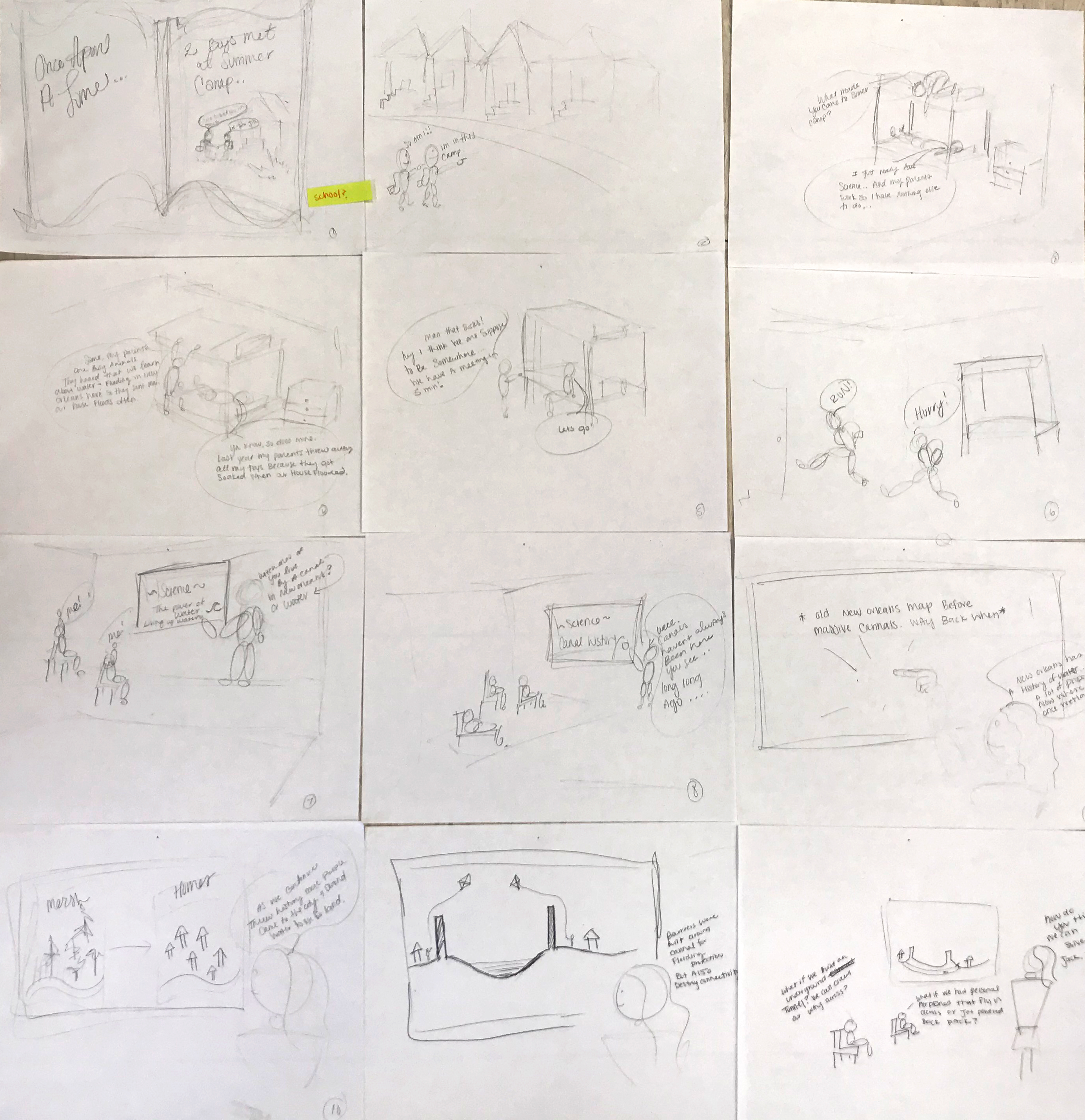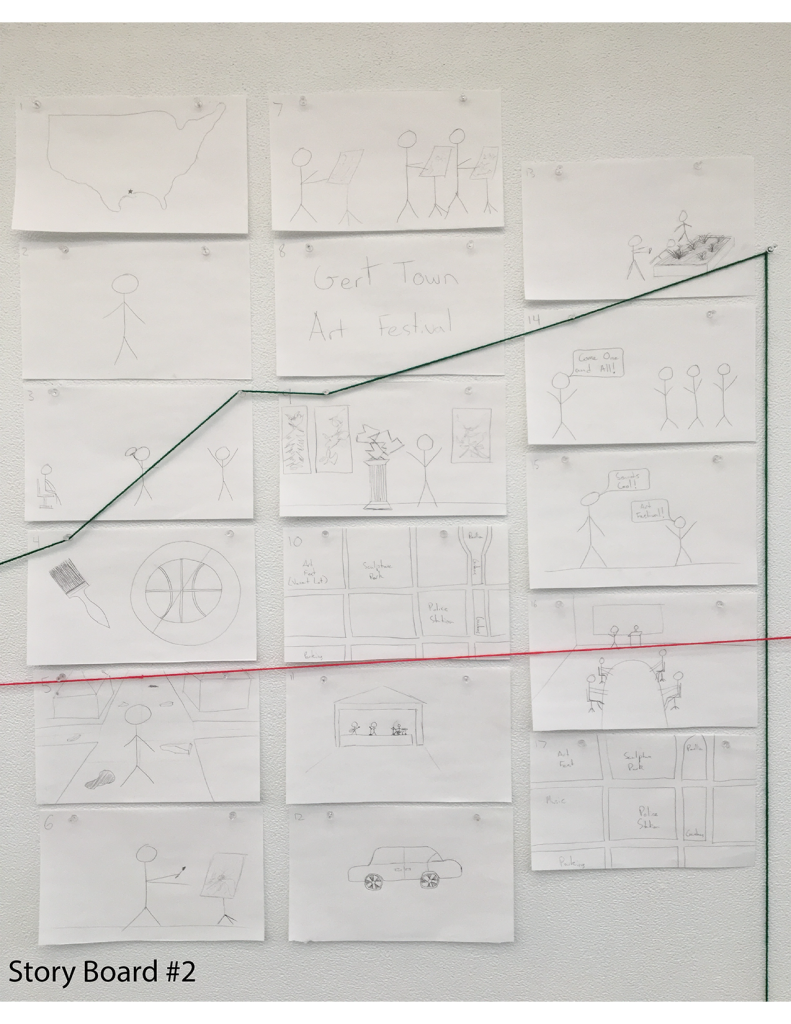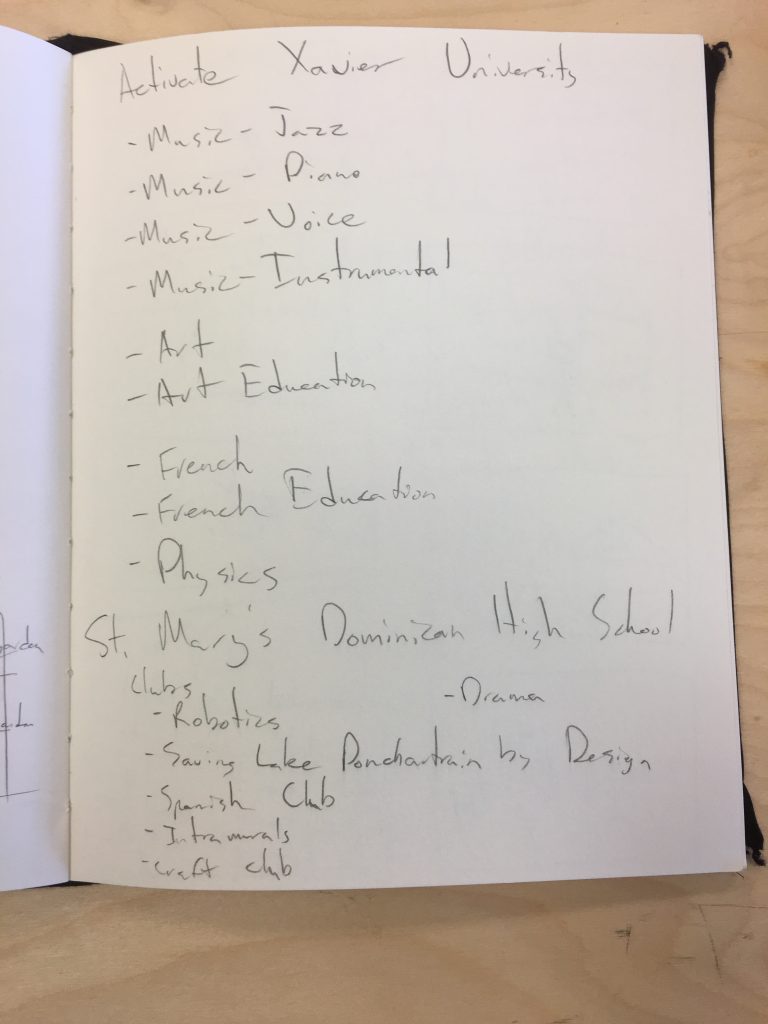Bywater Area: Food Forward
My proposal is a multi-phase program that works to combat food insecurity in the Bywater Area. The Food Forward program introduces urban farms, orchards, and greenhouses to the area, as well as new restaurants, farmers markets, bus stops, and a community center.
Section #4, A Tale of Two Frogs
This video is all about section four of our transect line. This transect covers the interstate and how it divides the city in half for pedestrians. This video talks about some of the struggles which are faced by pedestrians and people who live and commute in the area. Not only does the interstate divide the city in half, but it also causes other environmental issues that residents have to deal with. Issues of trash and unsafe environments are issues that are closely tied with this section of interstate. This video also asks what do we do to solve these issues while still keeping the city traversable by car.
Section #7 (Seventh-Ward & St. Roch) – The Environment of an Abandoned Bike
The information provided within the linked video is a short glimpse and narration to the story of an abandoned bike in the Seventh-Ward and St. Roch borders of New Orleans. The introduction of the video is intended to provide a general context of the location of where the story will be held and where it falls within my portion of the MyNola Section Line. Our story begins just off the side of N. Claiborne Ave near Hunter’s Field. I chose this specific location as it has one of the largest amounts of abandoned property lots and is the main separation point of the two sections of 6th and 7th-ward. The interstate running above the location has created a very intimidating environment especially for a space that students of the Neo Jazz School have to move through. The story revolves around the bike and the student as the bike is immediately seen as a sentimental value to the student. The fact that there are two markets near this section of the city as well is another strengthening factor to the importance of bikes as they are popularly ridden around the market’s locations. Because of this, there are several local bike shops surrounding this location making a perfect destination for the student as this bike, in particular, is missing a pedal. The trip to the bike shop moves across town and allows for the audience to understand the difficulties and rough patches the student must pass just to make it to his destination. These difficulties include congested traffic, unsafe bikeways, blighted properties, and dysfunctional landscapes. This trip allows for the student to see a much larger aspect of the neighborhood that he lives in and expresses his imaginative ideas as to what aspects could be implemented into these spaces. The student eventually makes it to his destination just in time to get the bike fixed and join a group of bikers on their way to the market.
5: French Quarter & Treme
This video follows a young boy named James as he moves through Treme and the French Quarter. Like many kids in New Orleans, James cannot afford bus fare every day so he is forced to walk. We follow his emotions using music and expressive lyrics. James moves through his city and experiences different moods and emotions in different areas. Some areas are happy songs, and other areas are songs that question one’s safety. James goes through a rollercoaster of emotions in a single day.
At the beginning of the day, he feels on top of the world, as we move deep within the city, his mood changes. He starts to doubt himself and questions his relationship with his neighborhood. The goal for James and his neighborhood is to provide smooth transitions and one place for James to access resources without having to move across the entire corridor. Neighborhood markets and neighborhood transits could be the solution that this corridor needs. These neighborhood markets could help solve the food, health, and safety needs that currently exist. Proposing transits that stop at places like hospitals, clinics, grocery stores, daycare, etc. could solve frustrations for many New Orleans children.
Hollygrove | Section 1
Hollygrove is a passionate neighborhood with exciting opportunities for growth and dedication for the youth. The goal of this video is to showcase certain overarching ideas that could be utilized throughout Hollygrove to create safer and resilient spaces for children. The video hits on the ideas of restoring nature within vacant lots, encouraging car owners to park at new pocket parking lots, in turn opening up the circulation system that is the streets, and opening up the green slice that runs through the heart of Hollygrove with the opportunities of creating a triangle of land connecting Larry Gilbert Stadium, Lafayette Academy, and the Green Strip and becoming a safe haven for the movement of all.
The Lower Ninth Ward: Section 12
This video is a compilation of ideas at the start of the design process. The Lower Ninth Ward is in an unique position in regards to water and water management. The focus of Segment 12 going forward will be all around water and how the Lower Ninth Ward can live with water.
Breaking the Boundary of the Canal
On the adventure of breaking down the boundary of the Inner Harbor Navigational Canal, Jack and Jill start to brainstorm a plan that will allow them to see each other after school with ease. They also start to consider what kind of possibilities empty lots can become along the journey they take every day to and from school and they recognize the challenges that the canal brings. Through working together on these issues, Jack and Jill begin to establish a love for each other and their city like no other.
As I begin to continue the story of Jack and Jill, I plan on adding detail and more options/opportunities on how to cross the canal. Also adding a little history of the canal and why it exists will be become a learning opportunity for Jack and Jill.
Through the process, my story has changed from originally having two boys meet at summer camp, to having a boy and girl (Jack and Jill) meet at their school playground. By having them meet at the playground I was further able to develop the planning of a corridor on how kids get to school rather than just tell the story while at camp.

Hoffman Triangle – Section 3
Hi! In my video I made a story about the Hoffman Triangle to show how a child would feel, as well as some possibilities for improvement. This is a neighborhood with many vacant lots and lots of opportunity to grow. I got a lot of great feedback from this video and I plan on making improvements to make it the most informative and helpful video as it can possibly be. I am going to look more into the community aspect and how they feel about the space. Therefore, I can make the best judgment possible to improve based on what the community needs. I want the community to able to come together and be happy with the final product and something they can be proud of. Also, because this is a child-based project, I want everything to be accessible for children and design, so they won’t be scared walking around in the community. There are many great qualities in this neighborhood, and I want to express that and show everyone what makes this place in New Orleans unique. I hope you enjoy this video and the next one to come.
Glorifying Gert Town
This video analyzes the neighborhood of Gert Town, Louisiana and discusses the possibility of implementing an arts district into the community. It follows a fictional character named Frank and his process through designing the masterplan. The arts district utilizes neighboring schools such as Xavier University and St. Mary’s High School by encouraging clubs and disciplines to come teach about what they are studying.
From here, more analysis of Gert Town must be done in order to understand the culture of the community. Taking a deeper dive into who the residents are and what they do for a living will produce solutions that are better catered to Gert Town.
Process work shown below relays the different story board iterations and thought processess that were exercised. 



Phase 2 – Section #9
In my video, I focused on big, broad concepts and solutions. Moving forward, I want to take closer looks at a few problems specific to my neighborhood, and start thinking of more unique, New Orleans focused, solutions. I really liked the feedback about looking at a specific problem, and figuring out a design solution that involves infrastructure. To do this, I am going to need to look more into the history of the St. Claude neighborhood, and where they see themselves going in the future. I want to be able to determine a distinct culture or identity to the neighborhood so that moving forward it is something I can focus on.